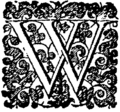User:Tyw7
 |
This is a Wikipedia user page
If you find this page on any site other than Wikipedia, you are viewing a mirror site. Be aware that the page may be outdated, and that the user this page belongs to may have no personal affiliation with any site other than Wikipedia itself. The original page is located at http://en.wikipedia.org/wiki/User:Tyw7 |
 |
| Local date and time: 2:17 am, August 4, 2025 BST [refresh]
Welcome to Tyw7's userpage on Wikipedia, the free encyclopedia that anyone can edit |
About me
[edit]| Web Presence | |
|---|---|
| My blog | |
| Social media | |
| Tyw77 on Twitter |

elcome to my nice quint home on the English Wikipedia. I am Tyw7 (pronounced /ˈtiː ˈwaɪ ˈdʌbəljuː ˈsɛv.ən/), an editor on the English Wikipedia. I live in the United Kingdom. I am interested in software and train related articles. I also like taking pictures of latest trains. You can see all of my pictures I uploaded at my gallery. Also, please feel free to follow me on Twitter.
I consider myself as a WikiSloth because I rarely make any edits and if I do, they are few and sparse in between. I also tend to do micro edits all over the encyclopedia. On Wikipedia, I had the pleasure of helping User:TechOutsider (who is no longer with us) with the articles Norton Internet Security and Norton 360 to bring it up to good articles class. For an idea of what kind of content I have contributed to the encyclopedia my contributions.
If you have any comments, questions, or suggestions for me or just want to drop by to say "Hi!" you are more than welcome to leave me a message on my talk page.
| Taken by Thu Ya Win | Gallery
Any use of images uploaded by me, Wikipedia editor Tyw7, must be attributed to me using my full name (Thu Ya Win) if you use it outside of Wikimedia projects such as Wikipedia. Failure to do so will result in a copyright violation. If you use my image/s outside Wikimedia, I would highly appreciate if you let me know by emailing me. This requires a Wikipedia account. I'm curious where my work is used. If you are a (commercial) publisher and want to use my pictures under a different license or in a way which is incompatible with the given free license, please contact me.
|
|
Awards

|
Edit count related userboxes
|
Wikipedia-related Userboxes
|
Languages Spoken
|
WikiProject Joined
|
Please more of my userboxes at User:Tyw7/User_box. For a full list of awards other users have given me see User:Tyw7/Awards. For all of my subpages visit: Special:PrefixIndex/User:Tyw7
Articles I have created
[edit]I have created the following new articles. Those with the in bold type have appeared on the main page as did you know entries.
Selected quotes
[edit]A God. The God. One word can make all the difference in the world.
Selected pictures
[edit]A cross section of a post-clitellum segment of an annelid (ringed worm); almost all segments of an annelid contain the same set of organs and parts, a pattern called metamerism. Annelids have no lungs, but rather exchange carbon dioxide and oxygen directly through the moist skin when blood reaches the extremely fine capillaries of the body walls; a dry worm cannot breathe and will die of suffocation. The worm's red blood, which does not consist of platelets or red cells but mostly of a liquid containing suspended hemoglobin, makes a circuit up and down the animal in its closed circulatory systems.
Diagram: K.D. Schroeder
Current selected picture:
Picture 13
 | |
| Wikipedia ads | file info – show another – #39 |
- Wikipedia pending changes reviewers
- Wikipedians who use HotCat
- Wikipedians who use Anti-vandal tool
- Members of the Ten Year Society of Wikipedia editors
- Wikipedians who fight vandalism
- User en-N
- User en-us
- WikiProject Scouting participants
- WikiProject Software participants
- WikiProject Computer security participants
- WikiProject Computing participants
- WikiProject Computer science participants
- WikiProject Microsoft Windows participants
- WikiProject Doctor Who participants
- WikiProject Trains participants
- WikiProject London Transport participants






